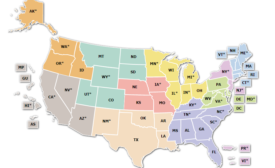Home » workplace safety
Articles Tagged with ''workplace safety''
OSHA in the age of robotics
Evolving tech may bring changes to 30-year-old LOTO rule
May 30, 2019
Contractors to drivers: Go slow in highway work zones
Associated General Contractors of America tries to reduce risk to workers
May 29, 2019
Human performance expert Shane Bush to lead special safety workshop following conclusion of the 76th Annual Pulp & Paper Association Health & Safety Conference
Focus is on Human Performance Improvement (HPI)
May 29, 2019
Become a Leader in Safety Culture
Build your knowledge with ISHN, covering key safety, health and industrial hygiene news, products, and trends.
JOIN TODAYCopyright ©2025. All Rights Reserved BNP Media.
Design, CMS, Hosting & Web Development :: ePublishing







